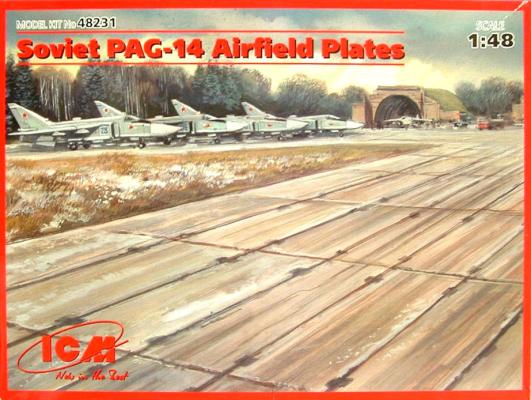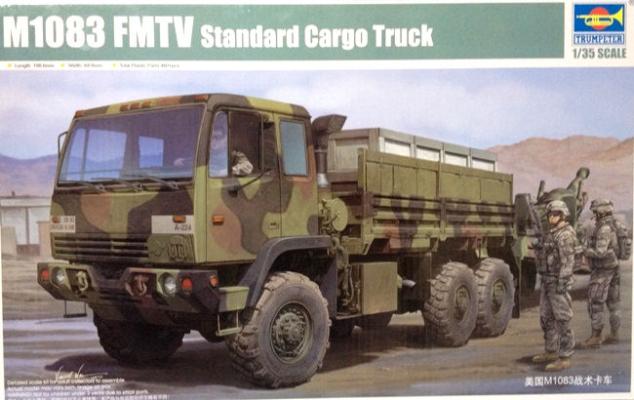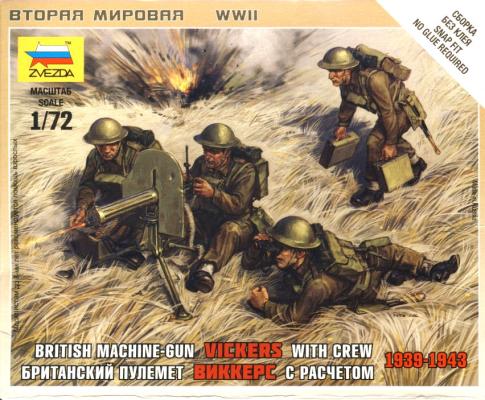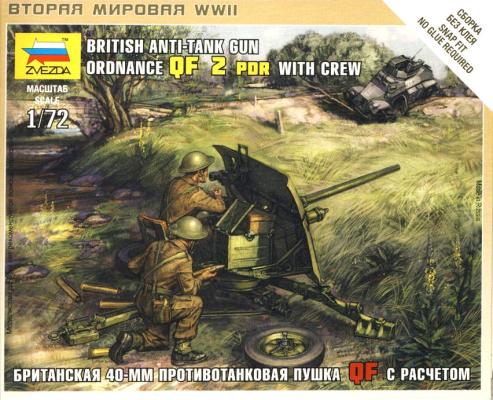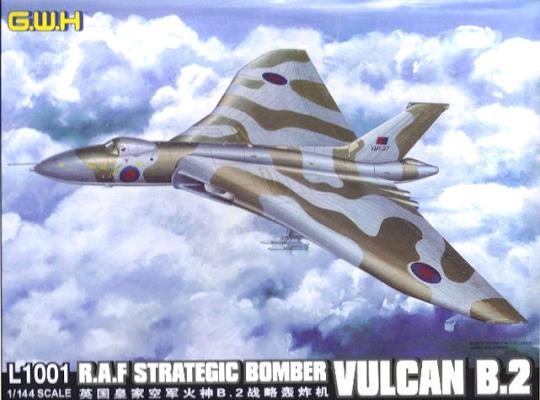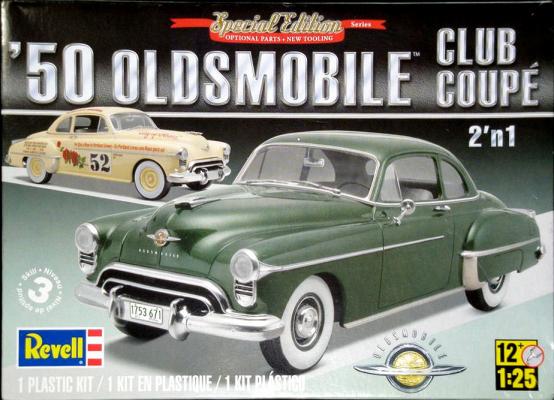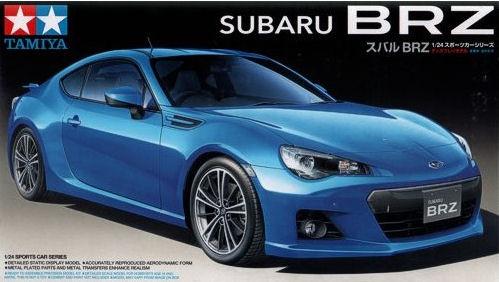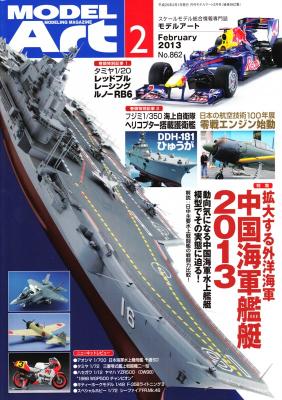One of ICM’s most recent offering is a set of PAG-14 Airfield plates used in the construction of airfields by the Soviet Union at home and in the Warsaw Pact nations. This particular set is for 1/48th scale. Knowing little of Soviet airfield construction – and what I did know centered on the use of hexagonal blocks for construction – I conducted online research into the PAG-14 plates. My first queries turned up a few photos, but then I found a research paper online — Naum Sapozhnikov and Raymond Rollings, Soviet Precast Pre-stressed Construction for Airfields, April 2007 — that shed a lot of light onto the use of these plates for airfield construction. Here is a little of the background from that paper.
What's New
Background
The US Army has attempted to standardize its fleet of vehicles ever since General Pershing pushed his squadron of 1916 Dodge touring cars into Mexico, chasing Pancho Villa. During WWI, the Army designed the “Standard B Liberty Truck”, of which some 9500 were manufactured by 15 different companies. The Army continued to design and update its truck requirements, and during WWII the GMC- and Studebaker-built 2 ½ ton trucks were representative of those basic designs. Other trucks were used, however, as vehicles from every manufacturer made their way into the military. After WWII, the M34 and M35 2 ½ ton and the M54 5 tons were updated into the M813 and M939 series. They served as the basis for a number of body styles, but the Army was still searching for a way to simplify, streamline, and reduce the bewildering variety of motor vehicles and overwhelming logistics chain.
This is another kit designed for Zvezda's war-game "Art of Tactic". This time it is a Vickers K machine-gun with a crew of 4, used by the BEF in France in 1940.
There are 25 parts including the gun, 4 crewmen, a base, and a flag piece for the game, as well as a movement card. Most of the parts make up the crew, with only 4 parts for the gun, and one of these includes the arm of the gunner. It is the usual snap-together kit made out of their usual softer plastic. The parts can be trimmed with a sharp knife but cleaning up the mold line on the figures is difficult. Tamiya liquid glue was used to help keep things together.
Zvezda has brought out another anti-tank gun for their war-game "Art of Tactic". This time it is the British version used by the BEF during the Battle for France.
The kit contains 22 parts for the gun, 9 parts for the 2 crewmen, a base, and a flag piece for the game, as well as a movement card. The kit has the same snap together construction as the other guns in this series and is made out of some type of softer plastic than regular injection kits, but not as soft as other figures. The plastic can be trimmed with a sharp knife. I did resort to Tamiya liquid glue for some parts to make sure nothing falls off later on. One of the parts for the gun is an optional carriage to display it in travel mode behind a vehicle.
Great Wall is a company new to me. I have seen their wonderful P-61 in a much larger scale and was impressed. This kit of the Avro Vulcan B.2 is equally impressive, especially considering the small scale.
Upon opening the box, I was Impressed with the packaging. Everything was either wrapped in plastic or foam paper. The fuselage is broken in half horizontally. I really liked the one-piece intakes that fit perfectly. In fact, every piece on this kit fits beautifully. No filler was needed at all.
Due to locating pins in the wings, they snapped together perfectly. This was the best fitting kit I have ever built.
I didn’t forget to add a nose weight before closing the fuselage. The kit includes an instrument panel and two pilots which I didn’t put in, as they cannot be seen thru the tiny windscreen.
Rockets Away! Revell’s new kit of what was essentially the first factory muscle car is a welcome nod to us “longer-lived” modeler-folks who can recall the marriage of GM’s first OHV V-8 and Oldsmobile’s clean styling as being either our first cars or someone in our family’s. The phrase “Not your Father’s Oldsmobile” comes to mind and no…this one wasn’t…exactly…but my Dad did have a ’51 Eighty-Eight which – even as a ten-year old – I recognized would go like the proverbial scalded ape.
1/24th scale, molded in “WRX” mica blue, black, clear and chrome; includes window masking templates, photo etched parts on an adhesive backing, and metal hood brace. The kit makes one version.
History and Research
The Subaru BRZ (B=boxer enginer, R=rear wheel drive, Z=last letter in the alphabet) is a result of a joint collaboration between Toyota and Subaru. It was designed as a world car and is known by the names Subaru BRZ, Toyota GT86, and the Scion FR-S. They are all powered by a flat “boxer”-style 4-cylinder engines in all models and is engineered by Subaru. Most of the rest of the development of the car was the work of Toyota.
Model Art Modeling Magazine is a Japanese publication that is released monthly. The text is mainly in Japanese with some English subtitles throughout. One selling point about these magazines is the high quality of the photographs and the models that are used.
The Stalingrad counteroffensive (Operation Uranus) showed the Red Army's urgent need for mobile heavy guns. The firepower of Soviet tanks, both motorized and with infantry units, was not sufficient to deal with German pillboxes and fortified buildings. In November, 1942, the development of a heavy self-propelled gun armed with 152.4mm ML-20 gun-howitzer was begun as project name KV-14, and the first prototype, Object 236, was completed in 25 days. Using the KV-1S tank chassis, mass production of the SU-152 started in mid-February, 1943, and about 700 were produced until superseded by the ISU-152 in December, 1943. During combat, it was found that the SU-152 was a great anti-tank gun that could take out a Tiger or Elefant tank destroyer with its 107 pound HEAT projectile. During the Battle of Kursk, the lack of roof vents led to crews passing out, so a later production model added vents and a hull machine gun.
History
The Polikarpov U-2 biplane was designed and built during 1928 as a primary trainer for the fledgling Soviet Air Force, and it seemed to possess all of the characteristics desired by that service, including rugged all-wood construction, a low-powered but reliable power plant, and excellent flying characteristics. It was produced in massive numbers, approximately 40,000 of them eventually being manufactured in the Soviet Union and foreign countries. The type was adaptable to many uses, including training, air ambulance, night bombing, crop dusting, and a few were even used as floatplanes. During the war, the plane was re-designated Po-2 in honor of the designer, Nikolai Nikolaevich Polikarpov. A few were even used by the North Koreans during the Korean War for night harassment, as, having all-wood construction, they had a very low radar profile. There are still a few flying today, especially in Europe.

